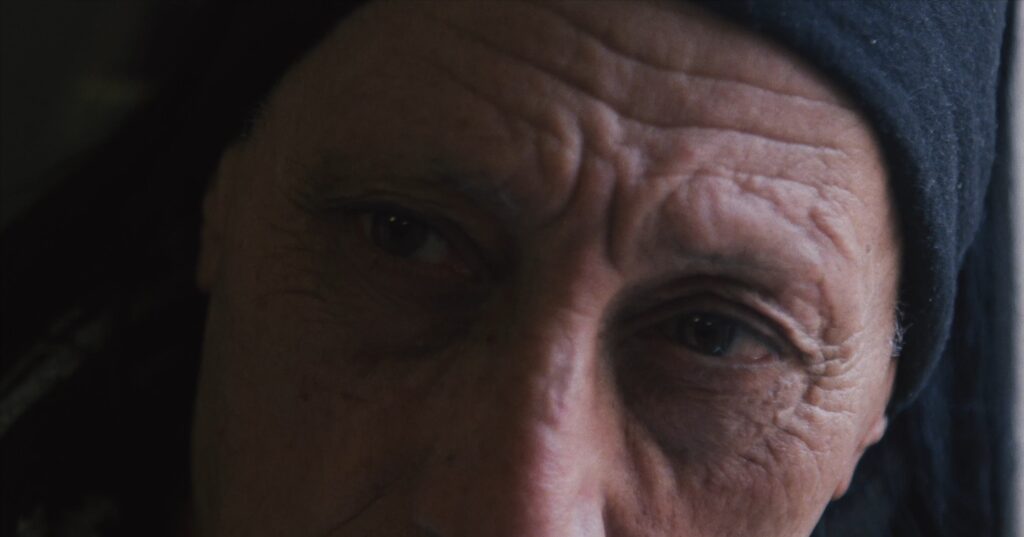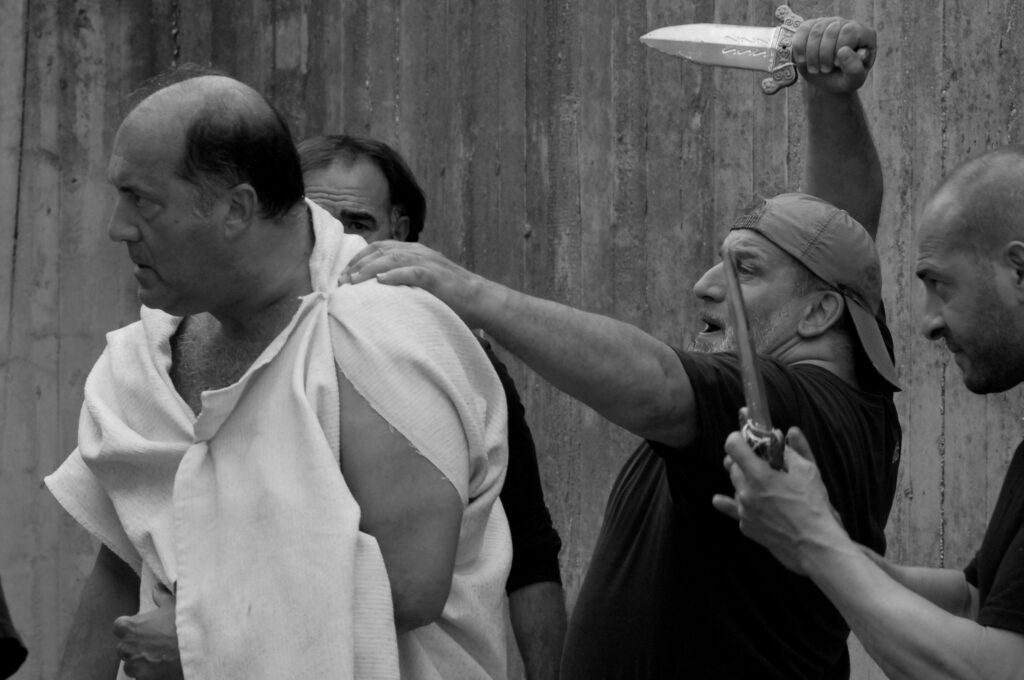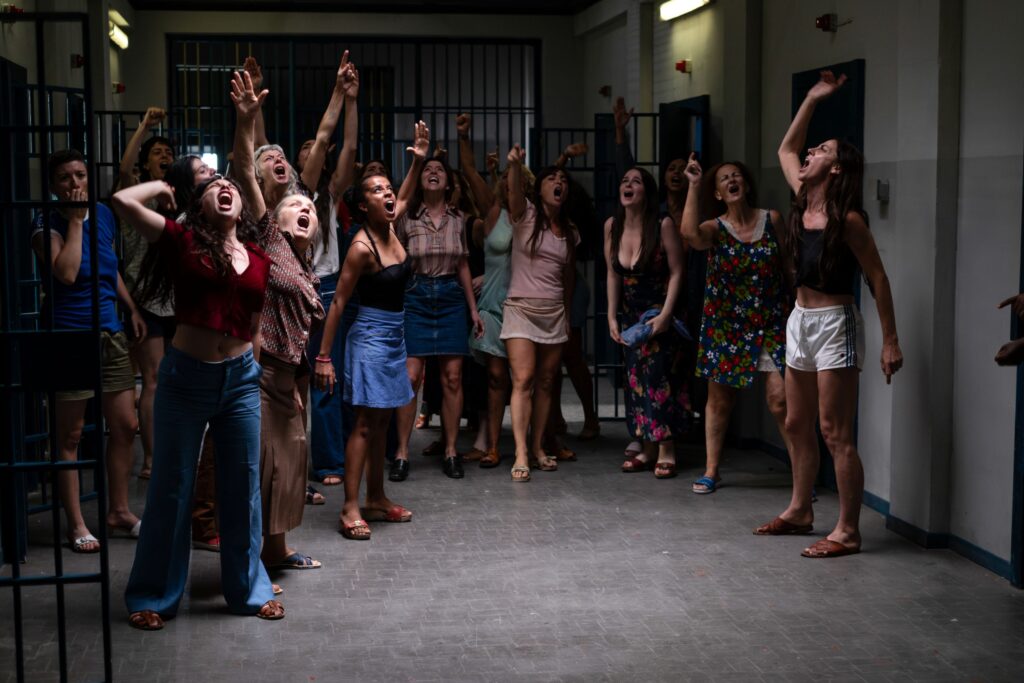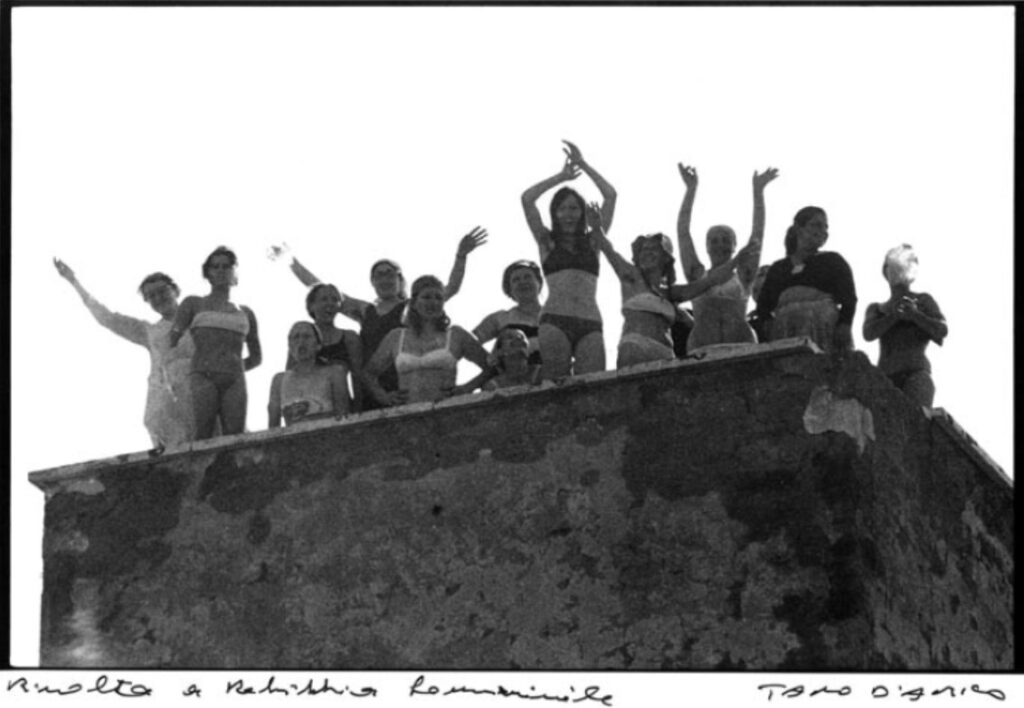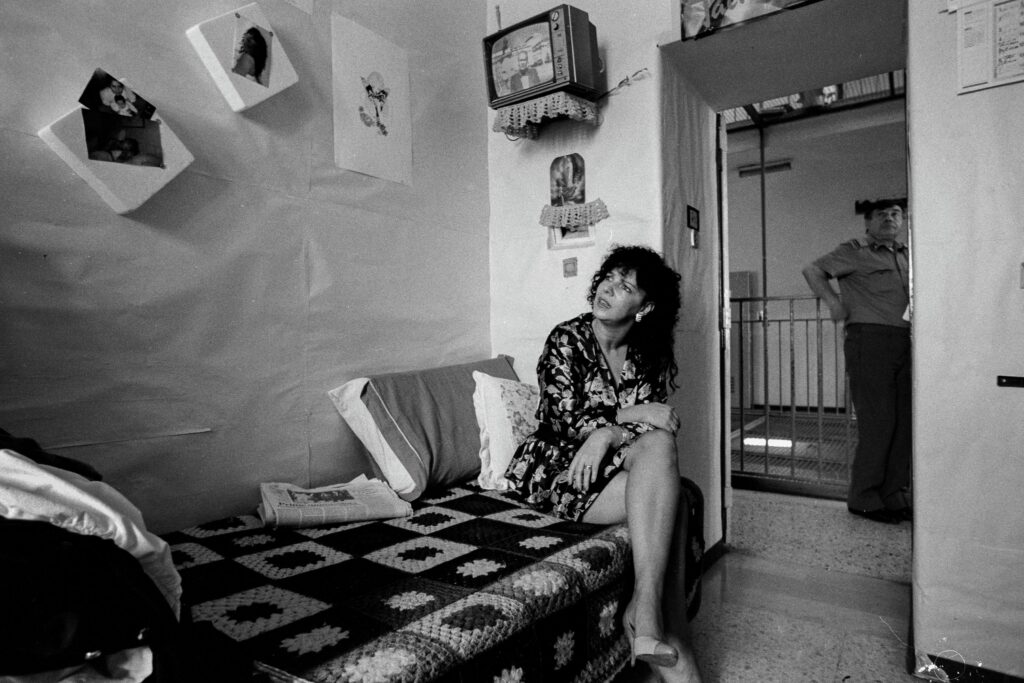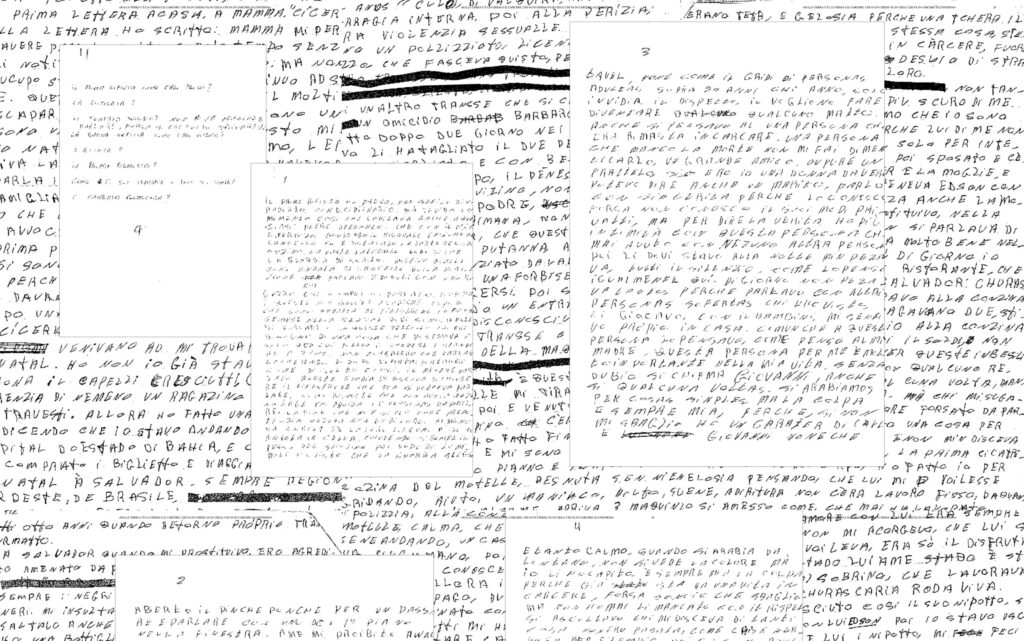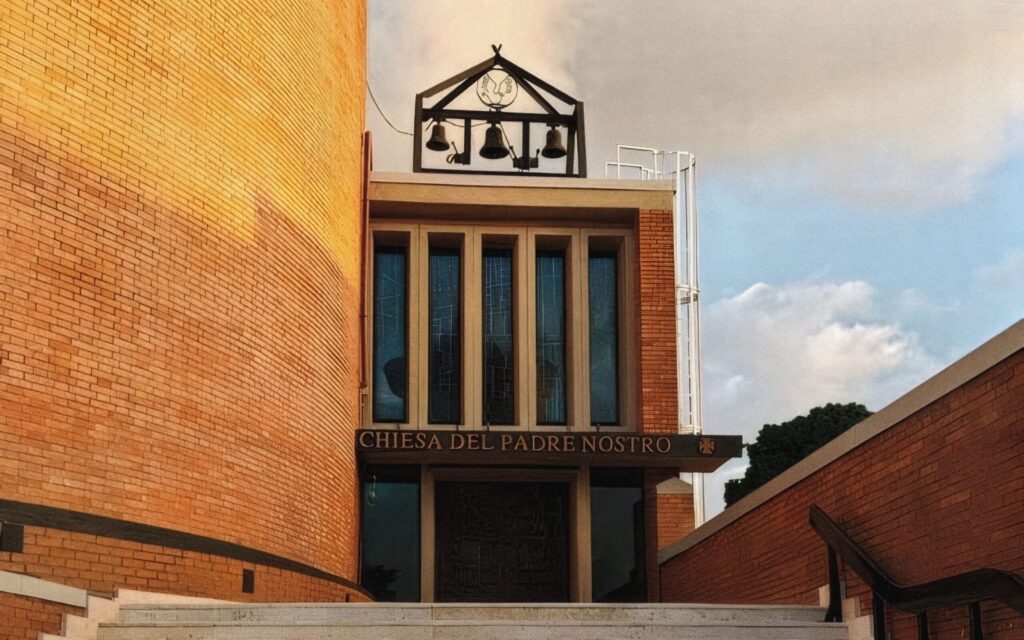My yellow-and-red Table

Out of nowhere, the commentator dives into a long digression about one of the opposing players. He barely gets his last words out before, a guttural “E sti cazzi?!” (“who fucking cares?”) erupts from the front row of faces fixed on the screen.
It’s hard to imagine a more Roman reaction than this. Just like it’s hard to imagine a neighbourhood more Roman than Testaccio. And finding one that’s more Romanista is absolutely impossible. Roma Club Testaccio embodies all this: being a Roman and a Romanista for generations is an essential identity trait. The club was founded in 1969, a few steps away from Campo Testaccio, A.S. Roma’s first stadium, designed by Silvio Sensi, father of Franco Sensi, the beloved future president of the football club. Here, being a romanista is a serious, deep-rooted matter… just like traditional Roman cuisine.
And just like all things taken very seriously in Rome, even football is steeped in irreverent and irresistible irony. It’s a constant barrage of banter, which can become relentless and almost hostile to anyone who isn’t used to it. Mario, proudly wearing this season’s Roma jersey, arrives to open the club. The name and number on the back is “Tesoriere 63,” making his role and years of experience immediately crystal-clear. Outside, the rain has been pounding the city for hours, paralyzing it in the usual chaos that strikes whenever it’s caught off guard. A fitting backdrop for the mood of the night: Roma is playing far away in Sweden, against the little-known Elfsborg.
It’s hard to imagine a neighbourhood more Roman than Testaccio—finding one that’s more Romanista is absolutely impossible.
For Romanisti, this setup, a distant away game, an obscure but pesky opponent, and being the favorites, rings alarm bells louder than the rain pounding on Testaccio’s rooftops. A nervous energy fills the club, a tension not entirely attributable to the weather. As the club fills up with true Testaccio locals, the humidity and anticipation are almost tangible. As the club fills up with true Testaccio locals, the air grows thick with humidity, and anticipation. But there’s also something else in the air: the mouthwatering aroma of pizza and fried delights. A couple of trays of margherita, one with potatoes - of course, laid out together to create the perfect yellow-and-red pattern - along with supplì and fried zucchini blossoms.

At the Club, food is a constant. The president himself even owns a trattoria/restaurant right here in Testaccio. They tell me about the countless occasions, both public and private, when they’ve organized proper feasts, ordering from the local spots. One name comes up above all others: Augustarello, unanimously declared by the members I meet as “the only true old-school trattoria” left in the neighborhood”. And really, Roman food is also inherently Romanista. I mean, think about it for a second: the red amatriciana and yellow carbonara; chicken with peppers—yellow for the sweetness, red for that touch of spice; the Holy Trinity of fried foods, with the red supplìs, and yellow zucchini flowers and fried cod. The colour palette of Roman tables has been yellow and red for as long as anyone can remember.
The directive from the club is clear: no touching pizza or fried goodies before halftime, to avoid chaos in front of the screen. The match, as expected, is a grind: ugly, frustrating, with few chances for Roma and several for the Swedish team. About 30 minutes in, the unease that had been lingering even before kick-off materializes: a fluke handball in the area gives the opponents a penalty, and Roma falls behind. When the lights come back on, the need to eat something is urgent: a necessary outlet to ease the pent-up frustration. Conversation is minimal, but jaws are working overtime. At first glance, the food seemed like way too much, but ten minutes later, I realize almost everything’s gone.
The beers from the minibar used by the Club to self-fund are cracked open, and people step outside for a smoke. A man yells mid-bite: “Ao, but where are these fried goodies from? They’re great.” On finding out they came from a nearby pizzeria, his response is immediate and dripping with irony: “Ah, well, of course, those guys only know how to do two things right: margherita and supplì.” Then he vanishes, his face buried in another bite. Pizza, beer, and fried treats are the holy trinity of football meals, and vice versa. Whether it’s with friends at home, in a pub, or at the stadium itself, they’re by far the most popular choices during matches. At the Club, they’re ever-present, and Testaccio offers plenty of excellent options.

The rain has eased, allowing for some peaceful chatting. People avoid talking about the dismal first half and instead focus on Testaccio, instead recalling the massive changes the neighbourhood has undergone over the years. Once a hub of public housing, today some of those same apartments sell for millions. Even the Club hasn’t been immune to these shifts. Its historic original location at Via Giovanni Branca 23 was abandoned due to unaffordable rent. The new spot, on Via Ghiberti, sits near the newer Testaccio Market.
Many of the Club’s members live here, some for generations, so stories about the stadium naturally intertwine with tales of the neighbourhood and its food. And it brings out everyone’s most authentic side: “Stadium stories are like the Bible—everyone adds their own twist”. They tell me about the glory days, the celebrations for championship wins: the one in 1982-1983 and the epic, week-long celebrations for 2000-2001, until their most recent joy. The Conference League victory in 2021-2022. But they also talk about how the Club often transforms into a mini Curva Sud, packed with people bursting into chants after every replay. “The neighbours yell at us that we’re not at the stadium.”
Football itself has little to do with it. It’s all about the neighbourhood and the people that live there: It’s about belonging.
The slightly subdued atmosphere tonight is no less Romanista than the unbridled euphoria of a championship celebration; in fact, if anything, it’s even more so. Meanwhile, the news of Daniele De Rossi’s sacking is still fresh: a bolt from the blue that left thousands of fans stunned, sparking protests and antagonism the likes of which hadn’t been seen in years. Upon hearing the news, the Roma Club Testaccio’s reaction focused on Daniele De Rossi as a human being first, and as professional later - and as an act of protest against the club’s management. A delegation even made its way to the now-former Roma coach’s home, lighting flares and chanting his name loudly.

True Romanismo is pretty much all in here. In this closeness and warmth that, like in any family, can sometimes become dysfunctional but still holds a pure, irrational feeling that’s hard to explain to outsiders. This brings to my mind the title of a book by journalist Daniele Manusia, dedicated to Roma’s former captain: Daniele De Rossi o dell’amore reciproco. (Daniele De Rossi or Mutual Love). Roma fans lose it when they feel their love isn’t reciprocated, and right now, that seems to be exactly what’s happening. This explains why players with a modest talent, but full of heart and connected with the club and its community, have left an indelible mark on generations of fans. Meanwhile, others - maybe more technically skilled but “cold” in their relationship with the club and the fans - quickly sink into oblivion.
If there’s one man who embodies all of this, it’s Claudio Ranieri. Born in San Saba but raised in Testaccio during the 1960s, he was first a player (just a few appearances) and later a coach for Roma. His bond with the fans is visceral, almost magical, marked by a deeply moving loyalty. Ranieri never managed to bring a trophy to the team (though he came heartbreakingly close), and perhaps it’s precisely for this reason—for falling just short in such a Romanista way—that he got a place in the pantheon of the fans’ most beloved figures. Claudio Ranieri, affectionately nicknamed “Er Fettina” (the Cutlet) because, as a boy, he would occasionally help his father in the family butcher shop right here in the heart of Testaccio.
As the second half begins, we’re back inside, clinging to the hope of an outcome different from the one that already feels inevitable and that, unfortunately, will be confirmed by the final whistle. Some are still chewing the last bites, while a few teenagers pass through to grab beers, greeted warmly and with playful banter by the group. A few members linger by the door, pretending to play it cool, with cigarettes dangling from their lips. But they give themselves away immediately: at the slightest rise in the commentator’s voice, they pop their heads inside, wide-eyed.
A real Romanista just can’t act as if nothing happened. Sure, they might pull away for a while, try to detach, but the umbilical cord tying them to this faith, mysterious to many, runs way too deep. Football itself has little to do with it. It’s all about the stories of their neighbourhood, the people who live there, their family by blood, and the chosen family of friends they gather as they grow up and start exploring the world around. It’s intertwined with experiences, past or ongoing, with the nostalgia of the elderly, the raw energy of the young. It’s about belonging, the thing that keeps you grounded and reminds you of your place in the world. The same pride that sparks arguments about a recipe’s origins or the “right” way to make it. In short, Romanismo is a matter of blood, heart, and gut. And if that belly’s full, all the better.
